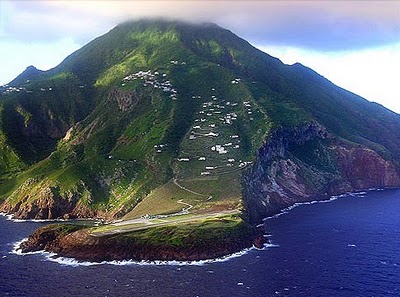When we think of invasive species, flamboyant fish from coral reefs are not usually the first thing that comes to mind. Indeed, if you put together a list of characteristics of successful invasive species (like
this one), "boring" would probably be close to the top, along with being quick to reproduce, not fussy about what you eat, having a large natural range, a great tolerance for extremes in the environment, and lacking natural enemies such as predators or parasites. Think of some of the most successful invaders and decide for yourself if these predictions hold true: carp, starlings, mosquitofish, rats, sparrows, mice, rabbits, dogs, cane toads, cats, foxes, kudzu, chickweed...
All this makes the invasion of the Atlantic seaboard by the Pacific lionfish, Pterois volitans, all the more remarkable. Lionfish are flat-out spectacular! Long prized as an aquarium specimen, they have bold stripes that spill over onto their fantastically long and showy fins; their scientific name even means "fluttering wings". The sheer beauty of lionfish doubtless plays a role in how they came to invade the Atlantic in the first place; most likely they were an escaped or released aquarium species that found itself able to survive quite nicely in the conditions of the coastal Atlantic. The beauty of lionfish conceals a dangerous secret - venomous spines on their dorsal (back) and pelvic (bottom) fins. While they won't kill a person; they cause excruciating pain. I've never been stung by one, but I have been stung by related scorpionfish (most recently the short-spined wasp fish) and the feeling is not one I'd care to go through again!

Over the course of just a few years, mostly since 2000, lionfish have spread dramatically along the coast of the Atlantic, from North Carolina down to the southern Caribbean and Mexico's beautiful
Yucatan peninsula. Typically considered to be a rocky or coral reef species,
they've now been found swimming in the
intracoastal waterway; that labyrinth of salt-marshes, channels and estuaries, engineered to allow safe passage of boats along the US coast in wartime. This is sort of an unusual location, but it speaks to the adaptability of this remarkable fish.
So, what to do about such an animal?? Well, that's a tough one. Invasive species (or more accurately, moving species around) are one of the greatest impacts humanity has had on natural environments, and there are very few cases where we have successfully eradicated or controlled an invasive (but see prickly pear in Australia), more often they just become part of the furniture and we get used to their impacts on the local ecosystem. Introducing natural enemies (diseases, predators) like they did for prickly pear is a dangerous game; if you tried to get the Cactoblastus moth introduced to Australia in these days of stricter biosecurity, you'd almost certainly be denied. You can easily get into a "spider to catch the fly" situation too; in fact that's how cane toads were introduced to many places - to control sugar cane beetles (which they suck at). Perhaps the best approach is to do what we do best - create a market that will promote human efforts to exploit them, and then rely on the Tragedy of the Commons to do the work for you. This has already been proposed with Asian carp. Fortunately, it turns out that lionfish are not only spectacular aquarium fish, but also delicious in a white wine sauce. I am sure that if we set our minds to it, we could do as good a job wiping out this species as we have with so many others. So c'mon everyone and grab a fork; Save a reef - eat a lionfish, today!
(Photo and graphic from NOAA)
 Friday, May 21, 2010 at 10:28AM
Friday, May 21, 2010 at 10:28AM 







